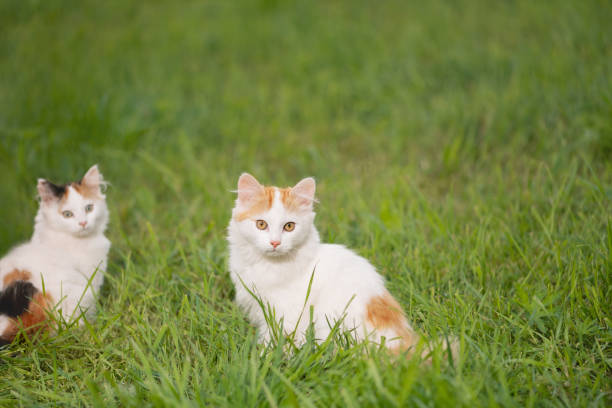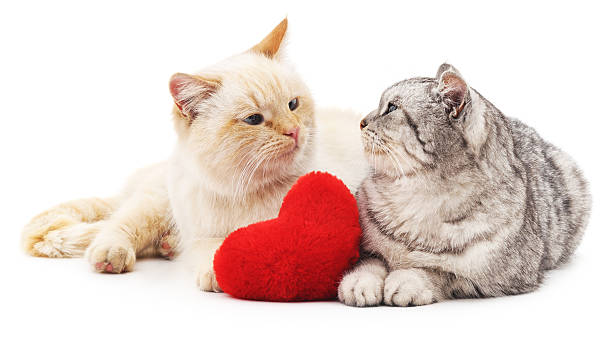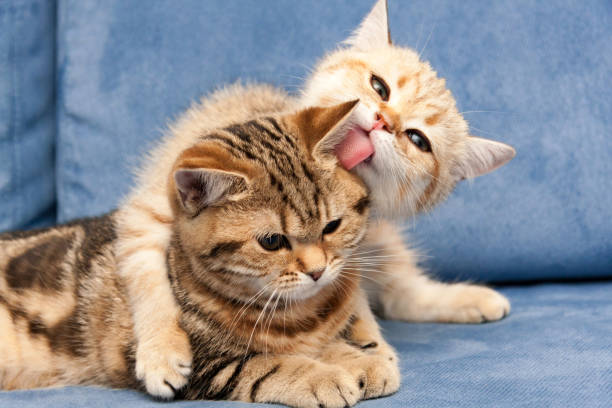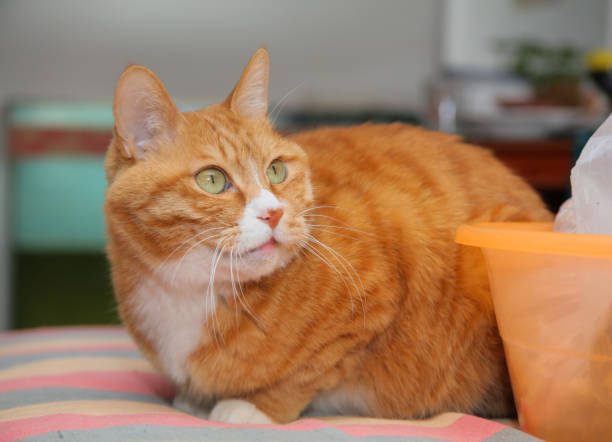How to Tell the Difference Between Male and Female Kittens
Cats, with their limitless energy and cute jokes, are overwhelming animals that bring pleasure to our lives. Whether you’re a carefully prepared feline proprietor or considering embracing your most memorable cat friend, one inquiry frequently emerges: How do you tell the difference between male and female kittens?
While it might appear to be trying right away, understanding the unpretentious subtleties in actual qualities and ways of behaving can assist with recognizing the two sexual orientations. We will look into the different techniques and prompts to precisely decide if a little cat is male or female.

Understanding the life systems
The most important phase in knowing the orientation of a cat is to look into its life structure. How to tell the difference between male and female kittens begins with perceiving the unmistakable elements of every orientation.
In male cats, the most unmistakable trademark is the presence of the genitalia, specifically the gonads, which commonly slip between 6 and 12 weeks old. By delicately lifting the little cat’s tail and inspecting the region just underneath the rear end, you can frequently notice two little round structures, demonstrating a male.
On the other hand, female little cats need noticeable gonads and, on second thought, have a genital opening found nearer to the rear end. This opening is generally more conspicuous and stretched in females, looking like an upward cut.
Also Read:
- What is the Difference Between a Cheetah and a Leopard?
- What is the main difference between asexual and sexual reproduction?
- What Is the Difference Between Baking Soda and Baking Powder?
- What’s the Difference Between Liposuction and Tummy Tuck?
- What’s the Difference Between Down Syndrome and Autism?
Noticing Optional Sexual Qualities
Besides essential genitalia, optional sexual qualities can likewise give important insights into deciding the orientation of a little cat. How to tell the difference between male and female kittens stretches out to noticing unpretentious varieties in their actual attributes.
Male little cats will quite often have more extensive heads and thicker necks than their female partners. Furthermore, male little cats might show a stronger form as they mature, especially in the chest and shoulder regions. On the other hand, female little cats frequently have a more thin and elegant appearance, with a milder facial construction and a smaller neck.
Social Prompts notwithstanding actual properties, noticing conduct signals can help with separating between male and female little cats. Instructions to differentiate between male and female little cats additionally include focusing on their collaborations and inclinations. Male cats are ordinarily more confident and active, showing an energetic and, once in a while, disorderly way of behaving.
They might take part in harsher play and be more disposed to autonomously investigate their environmental elements. Then again, female little cats will quite often be more reserved and wary, showing a gentler disposition and leaning toward calmer exercises like prepping or snuggling.

Counseling a Veterinarian
While the previously mentioned strategies can be useful in deciding the orientation of a cat, counseling with a veterinarian is constantly suggested for exact affirmation. Veterinarians have the skill and experience to lead careful assessments and impart proficient bits of knowledge into the little cat’s orientation.
During a normal examination, a veterinarian can carry out an actual assessment and may likewise utilize methods, for example, palpation or ultrasound, to decisively affirm the little cat’s orientation. Moreover, veterinarians can offer important counsel on little cat care and give fundamental immunizations and protection medicines.
Commonsense Ways to Recognize Orientation For those considering how to tell the difference between male and female kittens, here are a few down-to-earth tips to remember:
- Genital Assessment: Lift the little cat’s tail and review the genital region for highlights.
- Physical Attributes: Notice the little cat’s general appearance, including head shape, body size, and bulk.
- Behavioral Perceptions: Focus on the cat’s way of behaving, taking note of any distinctions in fun-loving nature or amiability.
- Consultation with a Veterinarian: Look for proficient direction from a veterinarian for precise orientation affirmation.
Final words
All in all, insightfully, the orientation of a cat includes a blend of cautious perception, information on cat life structures, and figuring out conduct prompts. By adhering to the rules framed in this aide on the most proficient method to differentiate between male and female cats, you can certainly decide the orientation of your shaggy companion.
Keep in mind that, while it might take a little practice and persistence, the bond you build with your little cat will merit the work you put into getting to know them better.

FAQs
Are there any viewable signs to assist with recognizing the orientation of a cat?
Indeed, there are a few obvious signals that can assist with distinguishing the orientation of a little cat. Male little cats frequently have more extensive heads, thicker necks, and a more solid form, while female cats will generally have a gentler facial design and a more slim appearance.
Can you decide a little cat’s orientation by conduct alone?
While conduct can give a few insights, it’s not generally dependable for deciding orientation. Nonetheless, male cats might show a more decisive and active way of behaving, while female cats might be more reserved and careful.
Should I counsel a veterinarian to affirm my little cat’s orientation?
Indeed, counseling with a veterinarian is suggested for precise orientation affirmation. Veterinarians can carry out intensive assessments and may utilize methods, for example, palpation or ultrasound, to decisively affirm the little cat’s orientation.
Are there particular ways to recognize orientation in extremely youthful little cats?
In extremely youthful little cats, deciding orientation might be more difficult. In any case, looking at the distance between the buttocks and the genital opening can sometimes give some insight. Male cats ordinarily have a more noteworthy distance between these two regions compared with females.
Can a little cat’s orientation influence its character or conduct?
While orientation might impact specific conduct inclinations, for example, play style or amiability, the character is principally molded by individual demeanor and encounters instead of orientation alone.
Are there any well-being contemplations related to orientation in little cats?
Orientation itself doesn’t ordinarily influence a little cat’s well-being. Nonetheless, fixing is prescribed to forestall undesirable litter and give different medical advantages, paying little heed to orientation.
Is there a critical size distinction between male and female little cats?
Size contrasts among male and female cats are normally insignificant during the beginning phases of improvement. Be that as it may, male cats might become somewhat bigger and heavier as they mature because of their expanded bulk.
